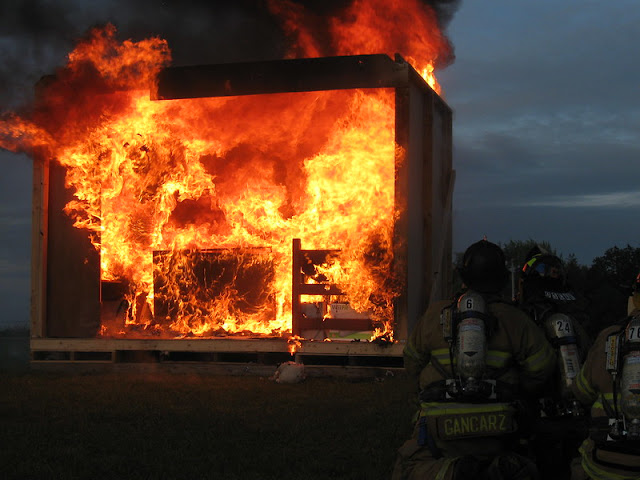Basic Fire Safety Tips for Every Workplace
Fire in a workplace can comprise the safety of employees and the public, and thus, employees should be educated on preventive measures. Every worker should be familiar with the fire risks and safety information apart from the precautionary measure to minimize possible casualties and property damages in case of a fire. Although the nature of a business might dictate how one should prepare his or her workplace, here are the fundamental tips of ensuring safety and fireproof.
Common fire hazards
The most culprits of fire in an office include electrical, heating, and cooking equipment. Electrical problems resulting from workplace fires are caused by faulty equipment, overloaded socket plugs, and damaged wiring. Defective electrical appliances might result in workplace fires, and thus, checking their integrity is necessary.
Overheating can cause fires in workplaces. Therefore, heaters should not be left unattended or close to flammable substances since they might initiate a fire. Additionally, workplaces with kitchens must train their workers not to leave cooking appliances unattended.
Emergency safety precautions
Once an employee discovers fire, he or she should raise an alert by activating the fire alarm. Immediate evacuation of the building should follow calmly towards the fire exit and assemble at an agreed point to check co-workers' safety. If trapped inside the building on fire, one should look for ways to prevent smoke accumulation. Additionally, trapped individuals should look for ways to ask for help through windows and relax to slow their heart rates.
Tips on fire preparation
Firstly as a means of fire prevention, the workplace must be kept clean and tidy to mitigate various threats, primarily if you majorly handle flammable substances. Working with combustible materials such as paper and oily rags necessitates safekeeping and far from naked flames. Secondly, the maintenance of faulty electrical wiring and equipment is essential in preventing fires. Therefore, the workplace must have an electrical expert to repair the faulty appliances and connection and prevent sparking or overheating.
Additionally, minimize overcrowding of the control panel room to improve sight and access during emergencies. The room should have visible markings to enhance swift identification. Workplaces should install systems that promote proper storage and safe storage of chemicals. Flammable chemicals include printing materials and products often kept in the cleaner's rooms. Therefore, workers should store all chemicals per the manufacturer's instruction and follow available safety data sheets.
Work environments with highly flammable substances such as oxygen tanks are susceptible to sparking tools and smoking. Therefore, the erection of clear signs that highlight the dangers of either smoking or using sparking tools in such are is necessary. Other measures include labeling of fire exits, restrict the use of some heaters, know the workplace capacity, and regularly test the alarms and detectors.
Lastly, ensure that the risk and safety plans of the workplace are approved. A detailed consultation on risk assessment provides business continuity and protection of both life and property. Furthermore, risk assessments indicate areas that fail to meet fire safety standards and propose necessary steps to improve fire safety.
Employee training
The level of training employees get on fire safety determines their safety in the event a fire erupts. Occupation types, in part, determine the necessary level of training. For instance, electricians and welders need high levels of fire training, while office workers require regular training on prevention and safety. Employees should be aware of potential hazards and sources within the workplace, emergency exits, fire drills, and using an extinguisher.
Employers should conduct fire drills regularly to promote recognition and evacuation in case of a fire. Exercises enable the workers to identify mistakes and fix deficiencies of evacuation plans in due time. The management can hire fire marshals to oversee the drill and improve it.
Equipment
All safety equipment must be open, avoiding any obstructions such as desks. Such devices include sprinkler systems, smoke alarms, fire escapes, alarms, and extinguishers. Management must fit smoke alarms throughout the premises, test them regularly, and change the batteries annually. Furthermore, the consistency of the potential threats and equipment is necessary since each area requires different approaches to dealing with the type of fire.
There are diverse types of suppression systems that include dry chemical, wet chemical, and carbon dioxide. Dry chemical suppressors extinguish combustible liquids found in mechanical, storage, and furnace rooms. Conversely, wet chemical suppressors a vapor foam that suppresses re-ignition in areas such as kitchens, while carbon dioxide is typically used in a computer or archival room to contain a fire.
Extinguishers come in different classes depending on the fire they can extinguish. Class A is tagged with a green triangle and douses ordinary combustible substances such as paper and plastic while class B douses flammable liquids like oil and paint. Class C, D, and K douse live electrical appliances, combustible metal alloy, and cooking media like grease. Some extinguishers can quench one or more types of fire or materials, such as ABC extinguishers.




Comments
Post a Comment